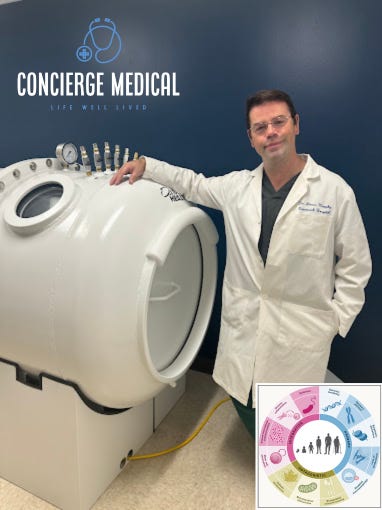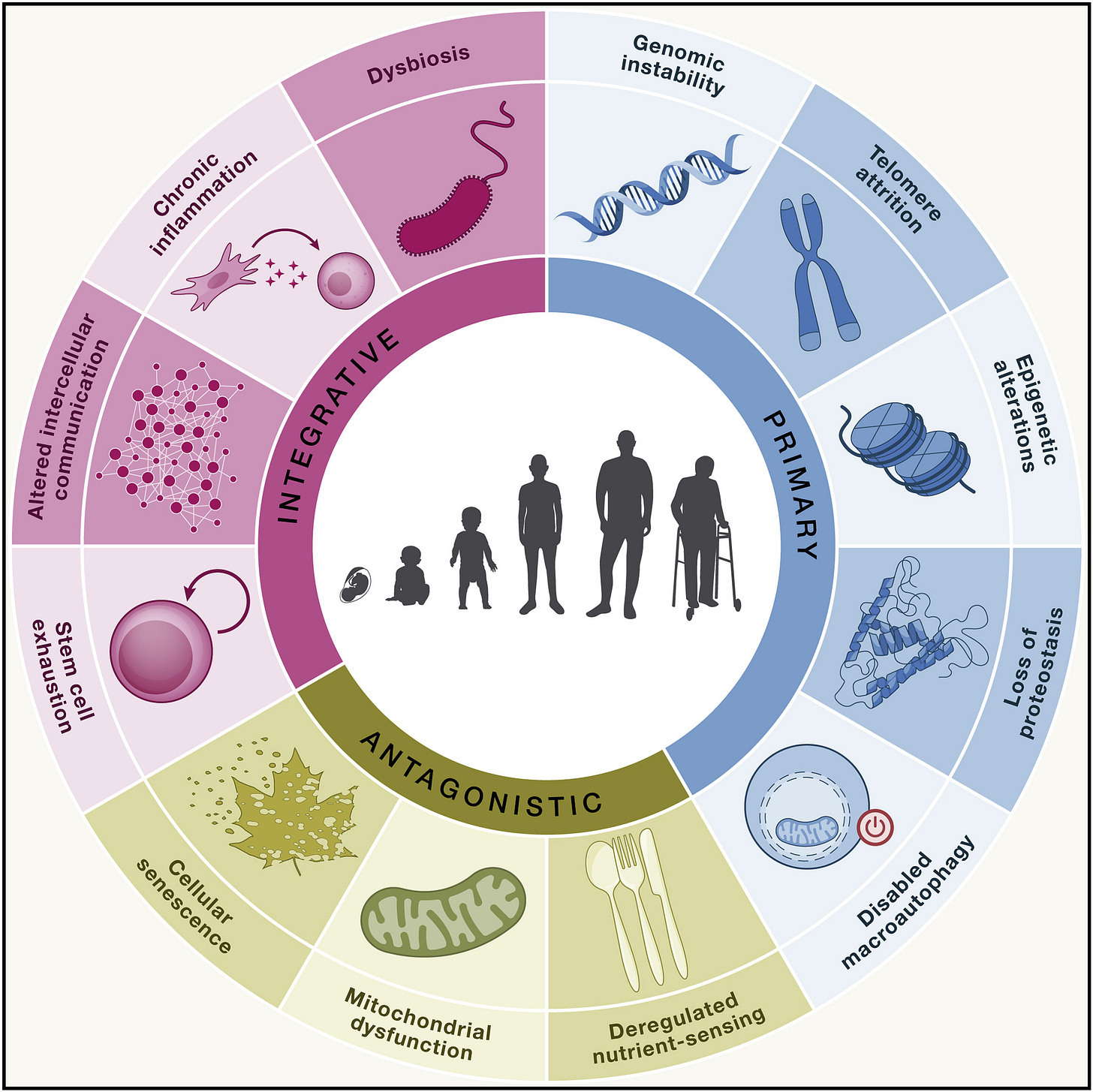Subscriber Bonus: Deep Dive-What Is Aging Really? Understanding the 12 Hallmarks of Longevity
Learn the hidden playbook for longevity.
In this post I will review the framework for understanding aging and will give you the tools to understand how to assess your aging and how to reverse the progressive processes that cause you to get older. For all paid subscribers, you are about to enter a masterclass on how to treat aging. Each month we will address the hallmarks with clinical tips and tricks from physicians around the globe!
🔥🔥PLEASE NOTE, THIS POST IS 81 PAGES OF GOLD. BOOKMARK IT AND COME BACK TO IT AS MANY TIMES AS YOU NEED. Also since you are paying members, you can always chat with me about these protocols and more. Now back to the show! 🔥🔥🔥🔥
Aging is one of the most fundamental yet poorly understood processes in biology. It is something we all experience, yet the mechanisms driving it remain a subject of intense research and debate. At its core, aging is the progressive decline in physiological function, marked by a reduced ability to repair damage, maintain homeostasis, and respond to stressors. This decline increases vulnerability to diseases such as cancer, cardiovascular disease, neurodegeneration, and metabolic disorders—conditions that become more prevalent as we age. While we often think of aging as an inevitable, linear process, the latest science suggests that aging is not merely the passage of time but rather the accumulation of molecular and cellular damage that can, in theory, be slowed, halted, or even reversed.
Chronological Age vs. Biological Age: Why Some People Age Faster Than Others
Not all aging is equal. Two people born in the same year can experience vastly different rates of aging, which is why biological age is a more accurate predictor of health and longevity than chronological age. Chronological age simply refers to how many years have passed since birth, while biological age measures the functional state of your cells, tissues, and organs. A person in their 50s may have the biological age of a 40-year-old if they have optimized their health and cellular function, while another may have the biological age of a 70-year-old due to poor lifestyle choices, environmental exposures, or genetic predispositions.
Scientists now use biomarkers of aging—such as telomere length, epigenetic clocks, inflammatory markers, and mitochondrial function—to measure biological age. We will review the types of tests later on in deeper subscriber supported posts so don’t forget to switch to a reader supported plan. Unlike chronological age, which is fixed, biological age is dynamic and modifiable. Emerging longevity research suggests that by targeting key aging pathways, we can actively influence the rate at which we age at a biological level. This is the key with Longevity Medicine and the secret recipe we have to lead you to a Life Well Lived!
The Hallmarks of Aging: A Framework for Understanding Longevity
To make sense of the complex biological processes behind aging, scientists have developed the Hallmarks of Aging framework. Originally proposed in 2013 and updated in 2023, this model outlines 12 interconnected biological hallmarks that drive the aging process. These hallmarks explain why aging occurs at the cellular and molecular level and serve as potential intervention points for longevity medicine.
The Hallmarks of Aging are grouped into three categories:
Primary Hallmarks – The root causes of aging, such as genomic instability, telomere shortening, and epigenetic changes.
Antagonistic Hallmarks – The body’s compensatory responses, including nutrient-sensing dysregulation, mitochondrial dysfunction, and cellular senescence.
Integrative Hallmarks – The system-wide consequences of aging, such as stem cell exhaustion, chronic inflammation, and dysbiosis (gut microbiome imbalances).
Understanding these hallmarks shifts the conversation around aging from inevitability to intervention. By targeting these biological mechanisms, researchers are developing promising therapies—such as senolytics (which remove dysfunctional "zombie" cells), NAD+ precursors (which boost mitochondrial function), and epigenetic reprogramming (which resets cellular aging clocks).
In the coming sections, we will break down each of these hallmarks, explore the most effective interventions, and discuss how emerging longevity medicine is paving the way for an extended healthspan—ensuring not just a longer life, but a healthier one.
Why Do We Age? The Science Behind Aging
Imagine a time traveler from the early 1900s stepping into a modern longevity lab. A century ago, aging was seen as an inevitable fate—a slow and irreversible decline written into our biology, much like the wear and tear of a machine. Doctors and scientists assumed that the body simply “wore out” over time, much like an old carriage or a rusting ship. The idea of slowing, halting, or reversing aging would have sounded like science fiction. But in the last few decades, a revolution has taken place.
Keep reading with a 7-day free trial
Subscribe to Longevity Insider with Dr. Murphy to keep reading this post and get 7 days of free access to the full post archives.





